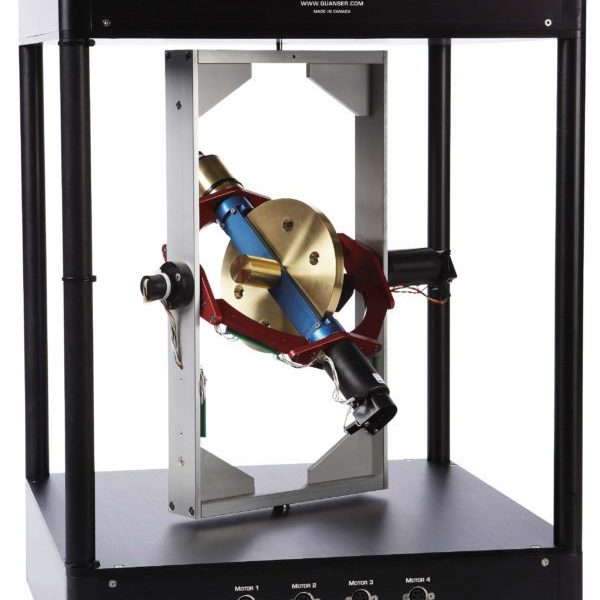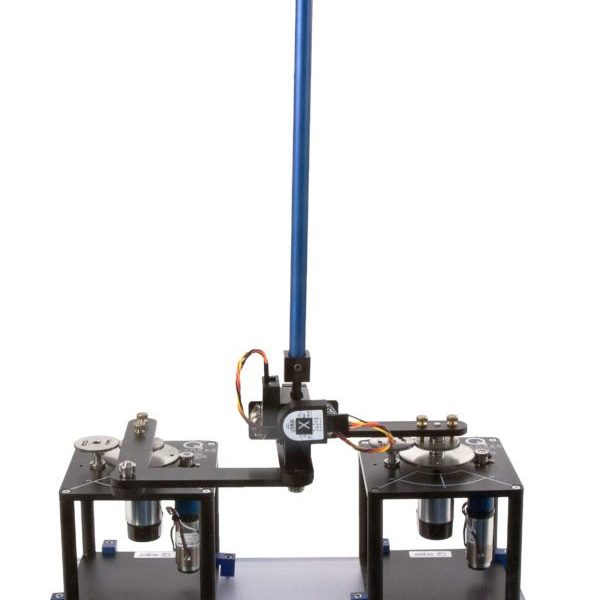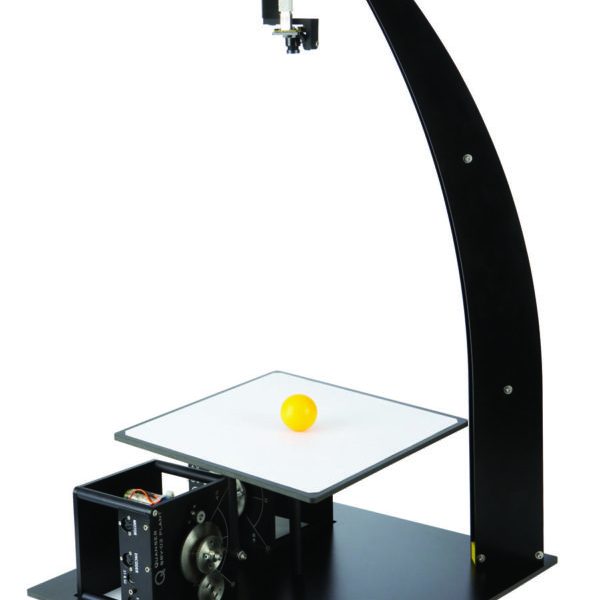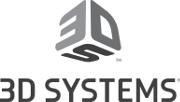3 DOF Gyroscope
The 3 DOF Gyroscope consists of a disk mounted inside an inner gimbal which in turn is mounted inside an outer gimbal. The entire structure is supported by a rectangular frame that is free to rotate about its vertical axis of using a slip ring design. The gimbals are also equipped with slip rings, allowing them to rotate freely and giving the disk three degrees of freedom. The plant is equipped with four DC motors and four encoders, with the ability to fix individual axis. Axes positions are measured using high-resolution optical encoders. Although the gimbals and outer frame are free to rotate, the plant provides the ability to fix any desired axis (outer frame, red and blue gimbals).
2 DOF Robot
The 2 DOF Robot module is connected to two Rotary Servo Base Units, which are mounted at a fixed distance. Two servomotors on the Rotary Servo Base Units are mounted at a fixed distance and control a 4-bar linkage system: two powered arms coupled through two non-powered arms. The system is planar and has two actuated and three unactuated revolute joints.
The goal of the 2 DOF Robot experiment is to manipulate the X-Y position of a four-bar linkage end effector. Such a system is similar to the kinematic problems encountered in the control of other parallel mechanisms that have singularities.
2 DOF Inverted Pendulum
The 2 DOF Inverted Pendulum module consists of an instrumented 2 DOF joint to which a 12-inch rod is mounted. The rod is free to swing about two orthogonal axes. The module is attached to two Rotary Servo Base Units. Their servomotors’ output shafts are coupled through a four-bar linkage, i.e., 2 DOF Robot module, resulting in a planar manipulator robot. The 2 DOF Joint is attached to the end effector of the robot arms.
The goal of the 2 DOF Inverted Pendulum experiment is to command the position of the 2 DOF Robot end effector to balance the pendulum. By measuring the deviations of the vertical pendulum, a controller can be used to rotate the servos, so that the position of the end effector balances the pendulum.
2 DOF Ball Balancer
The 2 DOF Ball Balancer module consists of a plate on which a ball can be placed and is free to move. Two Rotary Servo Base Units are connected to the sides of the plate using 2 DOF gimbals. The plate can swivel about in any direction. By controlling the position of the servo load gears, the tilt angle of the plate can be adjusted to balance the ball to a desired planar position.
The digital camera mounted overhead captures two-dimensional images of the plate and track coordinates of the ball in real time. Images are transferred quickly to the PC via a FireWire connection. Students can make the ball track various trajectories (a circle, for example), or even stabilize the ball when it is thrown onto the plate using the controller provided with the experiment.










